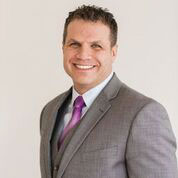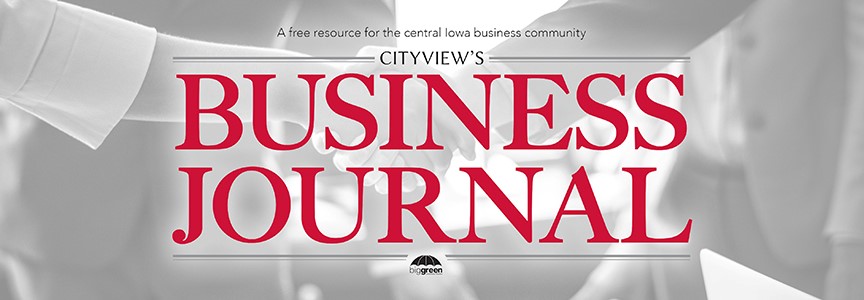7 things to consider about company retirement plans
 Buried in the daily grind of managing a business’ operations and overseeing employees is the business owner’s decision of whether to offer retirement savings to his or her employees.
Buried in the daily grind of managing a business’ operations and overseeing employees is the business owner’s decision of whether to offer retirement savings to his or her employees.
It’s something many business owners think about, but only about half will take the next step.
Andy Kleen and his parents, Dave and Tammy, started Kleener Image, a Grimes landscape supply company, three years ago. The three of them are the company’s only fulltime, all-season employees, but Kleener Image employs Kleen’s brother and others throughout the season. The company has good retention among those who work for it, but Kleen is thinking ahead for growth and wants to start offering a retirement plan to employees.
“It’s just a matter of when,” he says. “My main thing was trying to keep and retain people, and if there’s a tax incentive, that helps out for the business.”
Meanwhile, Tom Harris owns a moving company in Grimes and says most of his eight employees are self-employed and considers his company too small to offer a retirement plan. He’s currently a sole proprietor and has his own retirement set up with the help of a financial adviser.
Americans will need 70 percent to 90 percent of their preretirement income to maintain their current standard of living once they retire, according to the U.S. Department of Labor.
Most Americans don’t know this, aren’t saving enough or don’t feel prepared, according to a 2017 Merrill Lynch/Age Wave study. Of
those 50 and older who were surveyed, only 27 percent felt prepared to pay for a 10-year retirement. About 81 percent didn’t know
how much they would need to pay for their retirement, and most were only saving about 5.5 percent when they should be saving about 25 percent of their annual income after taxes.
The Insurance Retirement Institute conducted its own study that showed only 54 percent of baby boomers have retirement savings.
This is the lowest number since the survey began seven years ago.
Employers play an important role in helping their workers save for the future. However, only 34 percent of workers at small businesses — compared with 64 percent of all employees in medium- and large-size firms — are covered by an employer retirement plan, according to the Labor Department.
Loren Merkle, co-owner of Weiss Merkle Financial in Johnston, says he’s seen that number increase through the years. A decade
ago, between 15 percent and 20 percent of small business owners had retirement plans. That number is closer to the half today, he says, based on his experience.
Experts say retirement plans not only are attractive to prospective and current employees, but they also allow the employer to save for his or her own retirement while receiving tax advantages.
If you’re a business owner on the fence, here’s what to consider and how to get started.
1. Seek expert advice

formed Kleener Image about three years ago in
Grimes. The company is considering starting a
retirement plan for its employees.
Business owners have the power to make the decision when it comes to the retirement plans of their companies, but they need
professionals to provide guidance.
Merkle recommends business owners get started with the help of a record-keeper and custodian who can help navigate the
costs and maintenance of setting up and maintaining a retirement plan. The business owner also needs to compare plans.
“It’s not much different than shopping out a contractor if you want a house remodeled,” he says. “You need to get three or four bids
and ask a lot of detailed questions.”
Settle on a plan and experts who will help the company meet its financial goals from both the employer and employee standpoint, he says.
A retirement specialist expert also will educate employees about the plan’s rules and their investment options; help owners meet fiduciary responsibilities; keep employers up to date on Labor Department regulations; and ensure the appropriate annual forms are filed with the U.S. government, experts say.
Meeting fiduciary responsibilities is important, Merkle says, because the employer must meet regulations, which change yearly. They’ll need a professional’s help to ensure this is done correctly.
Business owners also need to consult the advice of a tax accountant or professional to learn the specific details of which retirement
plan contributions and costs are tax deductible.
“Small business retirement plans are so vast, you need to find someone who specializes in that area and find a team, a network you trust, because no one individual is an expert in every area,” Merkle says.
Kirk Bond, a partner with Accounting & Tax Professionals in Grimes, suggests business owners seek independent agents who are not tied to one company’s retirement plans and can offer them more options. He also says a professional can help business
owners evaluate whether they have enough cash to cover retirement plan contributions, and if they don’t, help them set up a soleproprietor-type plan, so they can receive tax benefits.
“A lot of small businesses we work with are very worried about cash flow — ‘If I set up a plan and have a bad year, what do I do?’ ” he says. “You don’t want to have to dissolve the plan or run short if you’re going to run out of cash at some point.”
That’s why Bond and other tax advisers meet with clients monthly or quarterly to evaluate the business’ finances. He recommends a business have at least six months of emergency money to cover shortfalls. Business owners also need to have a contingency plan in case of their death or if they become disabled.
2. Consider your goals in developing a plan
Business owners are not required to offer retirement plans to their employees. However, there are multiple benefits on both the
employee side and the employer side to offering retirement plans.
Bond suggests business owners first consider their tax benefits. There are tax benefits to both the employer and the employee: Employers can deduct contributions as a business expense, and employees can defer the taxes on their earnings of the money they put toward retirement.
Retirement plans can be one way to attract and retain qualified employees, Merkle says.
“Right now, it’s almost an expectation with prospective employees to offer a line of benefits,” he says. “One is a 401(k) or a retirement plan.”
Retirement plans also allow the business owner to secure their own retirement.
Merkle agrees even if a business owner doesn’t want to contribute to a retirement plan or is worried he or she doesn’t have the cash flow to cover that aspect of the plan, the employer should still allow their employees to save for retirement through payroll reduction.
These plans allow employees to save more money than they would be able to on their own. These types of plans put the responsibility of saving on the employees because they make the decision about whether, when and how much they contribute.
There are many different types of retirement plans employers can choose to offer depending on the size and goals of the plan. Business owners need to consider their intent behind the plan — whether it’s to provide additional benefits to employees, provide retirement savings for themselves and/or promote saving for their employees.
One factor to consider may be whether the employer intends to expand his or her business, and whether they’ll be prepared to offer retirement benefits to a larger group of employees.
For example, starting out with a SIMPLE IRA (Savings Incentive Match Plan for Employees Individual Retirement Account) might be a good option, but the plan is limited to 100 or fewer employees, so the business owner would need to be prepared to switch plans in the future.
“Once you set up your plan, it’s like a house; you need to maintain it,” Merkle says. “You have to show plans every couple of years to
make sure you’re offering your best to your employees and to make sure you can maintain the plan.”
3. Know what plan options are available

with Accounting & Tax
Professionals in Grimes
Most private-sector retirement plans are either IRAs, defined contribution plans or defined-benefit plans, according to the U.S.
Department of Labor.
According to US News and World Report, business owners should consider the pros and cons of any retirement plan, and they need to know what plans for which they are eligible.
Plans range from payroll deduction in which the employer gives the employee the vessel to orchestrate their own savings to plans where the employer matches a certain percentage of the employee’s salary each year toward retirement savings to plans where the
employee is guaranteed a specific amount of payment upon retirement.
Simplified Employee Pension plans are attractive to small business owners because they have low start-up and operating costs.
Generally, the employer must make a uniform percentage contribution for each employee, but contributions are not required every year. This allows business owners some flexibility in times when their income may vary.
A SEP plan allows money invested to grow taxes deferred. Then as the business owner or employee gets closer to retirement, a financial adviser will help him or her turn their retirement savings into a stream of income.
A SIMPLE IRA is oftentimes used for businesses with 100 or fewer employees. Employees can contribute a percentage of their
salary each paycheck, and employers either match the contribution dollar for dollar up to 3 percent of the employee’s compensation or make a fixed contribution of 2 percent even if the employee chooses not to contribute their own money.
Most small businesses choose to implement a SIMPLE IRA because it is easy to maintain, and the business owner can participate with few or no stipulations. There’s no or minimal upfront cost, can be maintained by the employer or their recordkeeping service, and requires fewer forms that need to be filled out and submitted to the IRS, financial experts say.
Different plans will mean different tax savings for business owners, Bond says. For example, a sole proprietor plan may allow the owner to save almost $50,000 and lower their taxes by that amount of money. A SIMPLE IRA usually allows the employer to deduct dollar-for-dollar what is contributed to retirement plans including their own.
Other retirement account options include profitsharing and 401(k) plans. In a profit-sharing plan, employers contribute to their employees’ retirement accounts at their discretion. Based on the plan’s terms, employers make not need to contribute a set amount each year.
An estimated 53 million U.S. workers participate in 401(k) plans that have assets of about $4 trillion, according to US News and World Report. Such plans have become a popular retirement tool for small businesses. Employees can choose to defer a portion of their salary into their 401(k) account, which allows them to reduce their salary before taxes, or deferrals can be made after tax, depending upon the plan type. Employers can make matching or percentage contributions.
Defined benefit plans are beneficial to employees because they know the fixed amount of benefit they will receive and often receive a
greater benefit than with other types of retirement accounts. The amount can be based on a set percentage of pay multiplied by the number of years the employee worked while the plan was offered. Employers generally contribute and deduct more each year in these types of plans, which also tend to be more complex and more expensive to establish and maintain. The employer may have contributed enough money during those years to fund the promised benefits, or the business will have to fund the allocation post-retirement.
4. Choose a plan that best suits a business’s needs
Once an employer has his or her goals outlined and knows the options available, he or she should select a plan that is suitable for both the business and personal goals. A plan may look good if the employer is only considering it for him or herself because it can allow maximum savings for retirement. However, the employer needs to read the fine print and make sure they aren’t required to offer the exact same benefits to their current and future employees.
Plans range from those for individual owner-operated businesses to those with more than 100 employees. Plans can overlap, so a business owner will need to compare options.
Some plans are easier and cheaper to set up and maintain than others with little to no administrative costs and simple reporting requirements to the IRS. Employers need to know what their obligations to their employees are with each plan: Some plans require no contribution from the employee while others require a specific match or percent contribution based on the employee’s
compensation.
Business owners also need to take into account how many employees and under what employment status conditions they will have to serve with the retirement plan. Some plans have no requirements, while others must be offered to all employees who meet an age and income requirement.
Another option to consider is how the business will pay for the retirement plan during a possible recession or if revenues fall. Plans such as a solo 401(k) allow employers to change their contribution level on an annual basis.
This type of 401(k) account for a self-employed individual or the owner of a very small business can be a great way to boost retirement savings.
5. Learn the upfront, ongoing expenses
One reason small business owners cited for not offering a retirement plan to their employees was the high costs associated with set-up and administration of the plan, according to the Labor Department.
Financial advisers say costs can be minimized through selecting a plan that is more focused on letting employees save on their own for retirement, and on selecting a plan that best meets the needs of the individual business.
Merkle says a business owner’s financial goals should be a huge component of which plan is selected because he or she will need to ensure they have enough cash to establish the plan and maintain it. It’ll also be important to look at what will happen to the plan if employees do not contribute to it or contribute the expected amount.
An employer who makes a large income and has a handful of employees may choose a plan in which he or she contributes a higher percentage into retirement accounts. On the other hand, the owner of a manufacturing company may have to select a plan where
he or she contributes less because the company has 200 employees.
There are upfront and ongoing expenses for retirement plans: 401(k) plans are a little more expensive, while a SEP has very minimal cost. Plans can be started for as little as $50 for a small business owner who only wants to create a retirement plan for him or herself and their family. Other plans can cost more than $1,500 upfront. Some of these upstart costs are currently refundable through a tax credit.
Employers can also expect to pay ongoing administration costs and fees for any legal and tax compliance issues that may arise.
6. Explain the employees’ responsibilities

of Weiss Merkle
Financial in Johnston
A retirement account doesn’t just fall on the shoulders of the business owner. Some plans require employees to deduct their wages
from their paycheck to contribute to the plan or allow them to contribute up to a certain amount toward their retirement.
The incentive of offering a retirement plan to employees may encourage them to work harder, specifically in cases where a company
operates a SEP. The more the business profits, the more the employer contributes.
Just as businesses can fall into hard times, employees may run into financial hardships. In these cases, employees may have the ability to withdrawal or take loans from their retirement before they are vested in the retirement account, according to the Labor Department. However, those fees and penalties fall on the employee.
“Vested” means ownership of the plan. Employees may be vested in their retirement plans in different levels, depending upon
whether the money was contributed by the employee or the employer. An employer cannot take back any of the money from an
employee who is 100 percent vested in his or her plan, according to the IRS. Amounts that are not fully vested can be taken back by the employer if, for example, an employee does not work his or her required number of hours during a certain time period.
For all types of IRA-based plans, all contributions are vested immediately, and an employee can withdraw money at any time, subject to federal income taxes. Early withdrawals may result in the person having to pay additional taxes. Those taxes can be high — with a SIMPLE IRA, the penalty could be 25 percent of the account’s balance. Employees are not permitted to take loans from their IRA-based retirement account.
Defined contribution plans operate differently. For 401(k) plans, employees’ personal contributions are immediately vested 100 percent. The employer contribution varies according to the plan’s terms. Employees are only allowed to withdrawal money from
the plan after a specified event occurs, such as retirement or if the plan were to be erminated. The withdrawals are subject to federal income taxes. Employees may be permitted to take a hardship withdrawal against their retirement account but would be subject to additional taxes.
7. Reap the benefits
In addition to saving the maximum amount of money a business owner can for his or her retirement, retirement programs also can
provide tax advantages to both employer and employee. Plus, money within the retirement plan grows tax free.
Business owners also should make sure they set up their retirement plan at a time of year where their contributions benefit them
the most for that tax year. This can help an employer shelter some of their income if he or she needs to reduce their tax bill. The
expense of the contributions to manage and set up a retirement account can be written off as business expenses, depending upon the plan.
Toward the end of the year, business owners can have a hypothetical tax return created to compare various retirement plans and learn which one would offer the greatest tax benefits to the business, says Bond, the tax and accounting partner.
This will give them the best picture of any tax deductions and savings they would receive, he says.
If a business owner operates more than one business, he or she will want to ensure a plan is selected where contributions to a
retirement account for one business doesn’t limit the person’s ability to save through a separate retirement account he or she may have. For example, contributions to a SIMPLE IRA count against the limit for the person’s 401(k) account, which can limit his or her overall retirement savings options. However, contributions made into a SEP IRA do not affect the person’s ability to contribute to another retirement account.
Self-employed business owners may consider a defined-benefit plan. While they’re less common with big businesses because of the expense associated with them, they can be good for small businesses because they allow the owner to save more money for retirement than they would be able to otherwise and to write off the plan contributions as a business expense. If the business owner consistently has money to save, he or she could save more than $100,000 a year for retirement. Definedbenefit plans also can be combined with a Solo 401(k) or a SEP IRA to allow for even more savings.
Small employers may be eligible for a tax credit that will enable them to claim a credit for part of the start-up costs of a retirement
plan, according to the U.S. Department of Labor. The credit is 50 percent of the set-up and administration cost of the plan, with a
maximum of $500 per year, for each of the first three years of the plan. ♦
The U.S. Department of Labor outlines retirement plans
IRA-Based Plans
• Payroll deduction IRA: It’s easy to set up and maintain, and any employer with one or more employees is eligible. Employee makes contributions to the plan through payroll deduction. Employees decide how much they contribute at any time, and contributions
are limited to $5,500 a year unless the employee is age 50 or older. Then he or she can contribute an additional $1,000. The plan can be offered to any employee.
• A SEP: It’s easy to set up and maintain, and any employer with one or more employees is eligible. Only the employer contributes to the plan. An employer decides whether to make contributes year to year. They can contribute up to 25 percent of the employee’s salary but no more than $53,000. This plan must be offered to all employees 21 and older, have been employed for three of the past five years and made at least $600.
• SIMPLE IRA plan: It’s a salary reduction plan with little administrative paperwork. A business with 100 or fewer employees that does not currently have a retirement plan is eligible. Employer makes contributions along with the employee through salary reduction. Employees can contribute up to $12,500. Those 50 and older can contribute another $3,000. Employers can either match employee contributions 100 percent for the first 3 percent of compensation (this match can be as low as 1 percent for two out of five years) or
contribute 2 percent of the employee’s annual compensation. The employee decides how much to contribute, and the employer must match or contribute 2 percent of the employee’s compensation. This plan must be offered to all employees who have made at least
$5,000 in either of the past two years or who are expected to earn that amount in the current year.
• Defined Contribution Plans: An option for any business with one or more employees, but generally must be offered to all employees at least 21 years who worked at least 1,000 hours in the past year.
• Profit sharing: Employer can make large contributions for employees as set by the terms of the plan, and the contribution amount is at the discretion of the employer. A maximum of 100 percent of an employee’s compensation or $53,000 may be contributed.
• Safe Harbor 401(k): This plan allows employees to defer high levels of their salary and is beneficial to employees who have higher compensation levels. Both the employee and employer contribute. An employee can decide how much to contribute but is limited
to $18,000 and another $6,000 if he or she is older than 50. The employer must make a matching contribution or contribute 3 percent. The employer/employee combined contribution cannot exceed the lesser of 100 percent of total compensation or $53,000.
• Automatic Enrollment 401(k): This plan allows employees to defer high levels of their salary and provides a high level of participation because it is automatic. The employee must contribute through salary reduction, and the employer may contribute. An employee can contribute up to $18,000 and another $6,000 if he or she is older than 50. The employer/employee combined contribution cannot exceed the lesser of 100 percent of total compensation or $53,000.
• Traditional 401(k): This plan allows employees to defer high levels of their salary. The employee decides how much to contribute through salary reduction, and the employer may contribute. An employee can contribute up to $18,000 and another $6,000 if he or she is older than 50. The employer/employee combined contribution cannot exceed the lesser of 100 percent of total compensation or $53,000.
Defined Benefit Plan:
• Provides a fixed, pre-established benefit for any business with more than one employee. An actuary must determine the annual contributions, which are funded primarily by the employer. The plan must be offered to employees who are at least 21 and have
worked at least 1,000 hours during the past year. The employee is vested in the plan according to its terms. Payments on the plan are made after a specified event such as retirement or plan termination. Employees may take loans against the plan but are subject to taxes.


superbeets review
I was able to find good advice from your articles.|